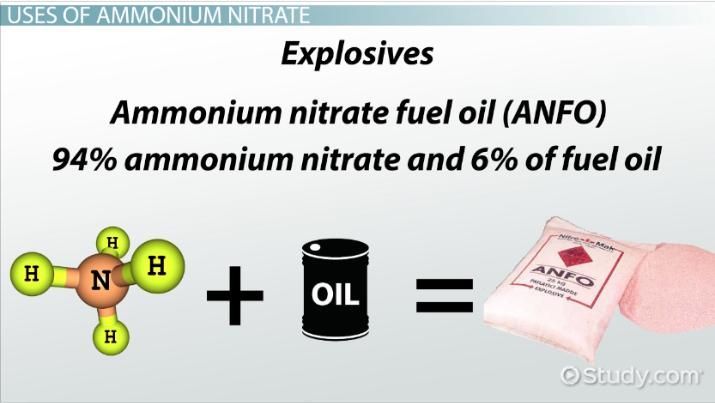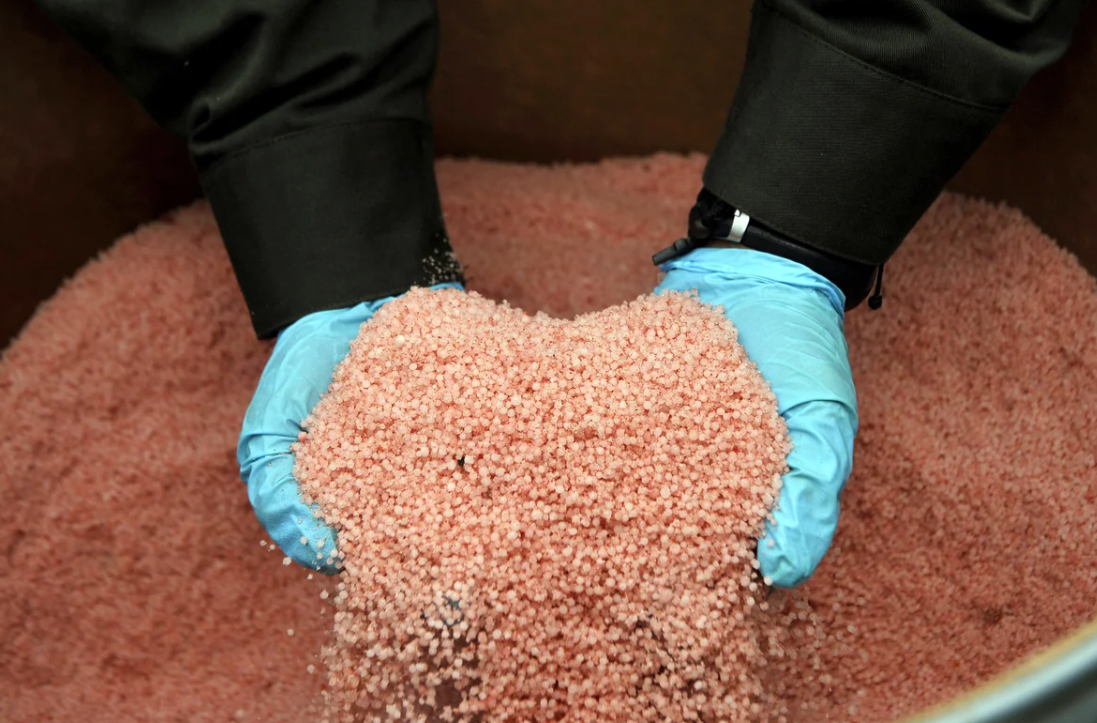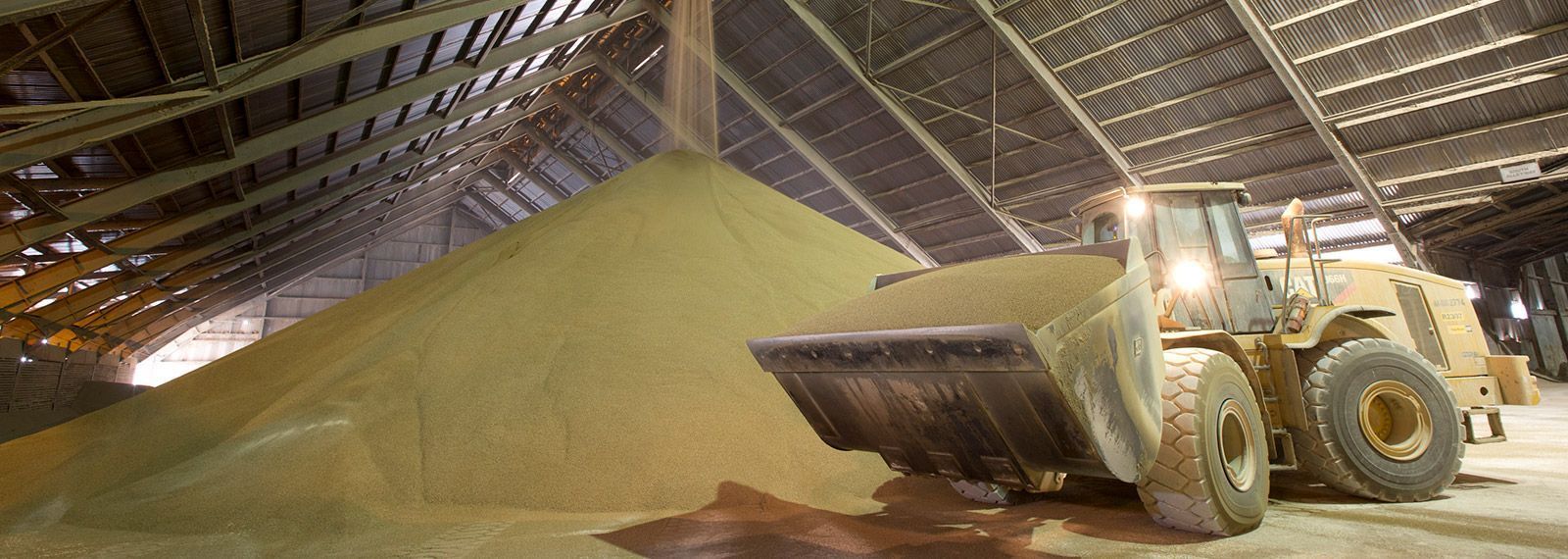The Role of Ammonium Nitrate in Industrial Explosives: Regulation, Storage and Safe Supply
Ammonium nitrate is a chemical compound with a dual-use nature, highly valued for its effectiveness in industrial applications, yet potentially dangerous if mishandled. As a powerful oxidizer, it plays a central role in producing industrial explosives, particularly in the mining, quarrying and construction industries, where controlled detonations are essential for operations. However, its potential misuse or accidental detonation has led to devastating incidents, most notably the 2020 Beirut explosion, which underscored the critical importance of strict handling protocols.
Given these risks, ammonium nitrate is subject to rigorous global regulation aimed at ensuring its safe storage, transportation and supply. For industries that rely on their performance and stability, understanding these safety measures is not only a matter of compliance but of operational integrity and public safety. In this article, we’ll explore ammonium nitrate’s role in industrial explosives, the regulatory landscape governing its use, and the best practices for its secure handling.
What is Ammonium Nitrate?
Ammonium nitrate (NH₄NO₃) is a white, crystalline solid made from ammonia and nitric acid. Chemically classified as a salt, it is highly soluble in water and remains stable under normal conditions. Its key characteristic is its role as a powerful oxidizer - it readily supplies oxygen to accelerate the combustion of other materials, making it highly valuable in both agricultural and industrial contexts.
In industry, ammonium nitrate is most commonly known for its use in explosives, particularly ANFO (Ammonium Nitrate Fuel Oil). ANFO is a widely used blasting agent that combines ammonium nitrate with a hydrocarbon fuel, such as diesel, to create a cost-effective and reliable explosive. Due to its stability, ease of handling, and strong detonation potential when mixed correctly, ANFO has become a staple in mining, quarrying and large-scale construction projects.
There are two primary grades of ammonium nitrate: agricultural and industrial. Agricultural-grade ammonium nitrate is used as a high-nitrogen fertilizer, supporting plant growth and crop yields. In contrast, industrial-grade ammonium nitrate has a higher purity and fewer contaminants, making it more suitable - and safer - for use in explosives. While both forms share the same chemical structure, their end-use applications and handling requirements differ significantly, especially due to safety considerations.
Industrial Applications of Ammonium Nitrate
Ammonium nitrate plays a vital role in numerous industrial applications where controlled blasting is required. Its primary use is in the manufacture of explosives, especially for sectors like mining, quarrying, construction and oil and gas exploration. Thanks to its affordability, chemical stability and consistent performance, ammonium nitrate-based explosives have become the industry standard for large-scale blasting operations.
In mining and quarrying, ammonium nitrate is used to break apart rock formations to access valuable minerals and ores. Its ability to deliver powerful and predictable energy release makes it ideal for fragmenting hard rock efficiently. Similarly, in road construction and controlled demolitions, explosives containing ammonium nitrate are used to shape terrain or safely bring down large structures while minimizing damage to surrounding areas.
The oil and gas industry also relies on ammonium nitrate-based explosives to facilitate seismic exploration and access underground reservoirs. In remote or rugged environments, its reliability and ease of transport are major advantages.
What sets ammonium nitrate apart is its cost-efficiency, stability and effectiveness. Unlike more sensitive or expensive explosives, ammonium nitrate can be safely stored and transported under the right conditions, and it can be mixed on-site into powerful blasting agents like ANFO. These benefits have solidified its role as an indispensable material in modern industrial operations.
ANFO and its Significance in Modern Blasting
ANFO (Ammonium Nitrate Fuel Oil) is created by mixing porous prilled ammonium nitrate with a small percentage of fuel oil, typically diesel. This combination forms a highly efficient blasting agent that is safe to handle until detonated by a booster.
Ammonium nitrate is critical to ANFO’s performance - it acts as the oxidizer that drives the explosive reaction. Its physical properties ensure even distribution and energy release, making it particularly effective in open-pit mining, where consistent blast patterns and fragmentation are crucial.
Thanks to its low cost, simplicity and powerful results, ANFO remains the go-to solution for bulk blasting operations worldwide.

Regulatory Landscape: Ensuring Controlled Use
Due to its dual-use nature, ammonium nitrate is tightly regulated across the globe to prevent misuse and ensure safe handling. Governments and international agencies have established comprehensive frameworks that govern their production, storage, transport and sale. These regulations are designed not only to reduce the risk of accidental detonation but also to prevent the material from falling into the wrong hands.
In the United States, the Department of Homeland Security (DHS) and the Bureau of Alcohol, Tobacco, Firearms and Explosives (ATF) require strict compliance measures. These include licensing, background checks and detailed documentation for all transactions involving ammonium nitrate. Facilities that store significant quantities must implement robust security plans, and all movements of the chemical must be tracked and reported.
The European Union regulates ammonium nitrate through its REACH framework (Registration, Evaluation, Authorisation and Restriction of Chemicals), with additional rules limiting the sale of certain concentrations to prevent illicit use. In India, ammonium nitrate is classified as an explosive under the Explosives Act, requiring manufacturers and users to obtain licenses and follow rigorous storage protocols. Australia also enforces strict licensing and security requirements, especially in mining-intensive regions.
In some high-risk or politically unstable regions, access to high-grade ammonium nitrate is restricted or banned altogether due to concerns about its potential use in improvised explosives.
For businesses operating in industries reliant on ammonium nitrate, working with compliant and transparent suppliers is essential. Regulatory adherence not only ensures legal operation but also helps maintain public trust and workplace safety.
International Regulatory Examples
Countries take different approaches to managing ammonium nitrate risks. Australia has a well-established licensing system that mandates training, secure storage and real-time tracking of ammonium nitrate for all users. The EU, through REACH and additional explosive precursors legislation, enforces strict thresholds and reporting obligations to ensure traceability and limit unauthorized access.
These frameworks reflect a shared global effort to balance the chemical’s industrial value with the need to protect people and communities from potential hazards.
Safe Storage and Transportation Protocols
Proper storage and transportation of ammonium nitrate are critical for minimizing the risk of fire, contamination and accidental detonation. As a strong oxidizer, ammonium nitrate should always be handled with care and according to well-established safety standards.
Storage conditions must be tightly controlled. The compound should be kept in a cool, dry and well-ventilated area, away from direct sunlight, heat sources, and combustible materials. Humidity control is essential, as moisture can lead to caking and degradation of the material, affecting both performance and safety. Importantly, ammonium nitrate must be stored separately from fuels, organic substances, acids and other reactive chemicals, as these combinations can significantly increase explosion risk.
Containers and storage silos must be clean and free from contamination. Even small amounts of combustible residue or incompatible substances can trigger dangerous chemical reactions. Adequate ventilation is also crucial to prevent the buildup of heat or gas that could lead to spontaneous combustion under rare conditions.
In transportation, the U.S. Department of Transportation (DOT) and similar global authorities classify ammonium nitrate as a hazardous material. Strict labeling, packaging and routing requirements are enforced. Only licensed carriers can transport it, and drivers must be trained in hazardous materials handling.
A tragic reminder of the importance of proper storage was the 2020 Beirut port explosion, caused by 2,750 tons of improperly stored ammonium nitrate. The explosion devastated the city, killed over 200 people, and highlighted the consequences of neglecting safety standards. This incident reinforced the global call for tighter enforcement and better oversight in the storage and transport of such sensitive materials.
Common Storage Mistakes to Avoid
Several frequent mistakes can undermine safety protocols:
- Mixing ammonium nitrate with incompatible substances such as fuel, metal powders, or organic materials.
- Overloading storage silos, which can increase pressure and reduce air circulation.
- Neglecting inventory turnover, allowing materials to degrade or go uninspected for long periods.
Avoiding these pitfalls is essential for safe and responsible handling of ammonium nitrate.
Supply Chain Integrity
Maintaining supply chain integrity is essential when dealing with ammonium nitrate, given its sensitive nature and potential risks. Every step - from manufacturing to end use - must be governed by strict safety audits, regulatory compliance and transparent documentation to ensure that the product is handled responsibly.
Producers and distributors must undergo regular audits and inspections to verify that storage, transport, and delivery practices meet national and international safety standards. Compliance with regulations such as the U.S. Chemical Facility Anti-Terrorism Standards (CFATS), the EU’s REACH, and similar frameworks in other regions is critical for safe operations.
End-to-end traceability is another cornerstone of a secure ammonium nitrate supply chain. Digital tracking systems help monitor each shipment, documenting its movement, quantity and recipients. This not only deters diversion for illicit use but also ensures a quick response in the event of an incident or recall.
Successful supply chain management also involves close collaboration with mining, construction and infrastructure clients. By aligning on safety expectations and delivery requirements, suppliers can support efficient, compliant and secure operations at every stage. A reliable and transparent supply chain builds trust while upholding public safety and industry credibility.
Supplier Certifications & Audit Practices
To ensure safe and compliant handling of ammonium nitrate, reputable suppliers maintain recognized certifications, such as ISO 9001 for quality management and ISO 45001 for occupational health and safety. These standards demonstrate a commitment to continuous improvement and risk mitigation.
Routine internal and external audits help identify potential weaknesses in safety procedures, storage practices, and regulatory compliance. Audits also verify that operations align with both legal requirements and client expectations.
Equally important are documented Standard Operating Procedures (SOPs), which guide staff in consistent, safe practices and ensure accountability across the supply chain.
Environmental and Security Concerns
While ammonium nitrate plays a critical role in industrial operations, it also presents serious security and environmental concerns when not properly managed. One of the most pressing issues is its potential misuse in improvised explosive devices (IEDs). Its availability and oxidizing power make it a target for illicit use, prompting governments and international bodies to impose strict controls on its sale, transport and storage. Preventing unauthorized access is a top priority across the supply chain.
Environmental risks also arise, particularly from improper disposal or accidental release into soil or waterways. Ammonium nitrate can contribute to water contamination, leading to eutrophication, which disrupts aquatic ecosystems by promoting excessive algae growth. These consequences underscore the need for responsible handling and environmentally sound disposal practices.
At DECACHEM, we take these concerns seriously. Our operations are designed to minimize environmental impact through careful material handling, compliance with hazardous waste regulations, and use of clean production technologies. Additionally, we implement robust security measures to prevent theft or unauthorized access and ensure that all clients meet regulatory criteria for safe use. By combining safety, sustainability and compliance, DECACHEM supports both the responsible use of ammonium nitrate and the protection of our shared environment.

FAQs: Ammonium Nitrate and Industrial Explosives
Ammonium nitrate is widely used in industrial explosives, but its dual-use nature often raises important safety and regulatory questions. Here are answers to some of the most frequently asked questions regarding its use in the field.
Is ammonium nitrate explosive by itself?
No, ammonium nitrate is not explosive on its own under normal conditions. It is an oxidizer, which means it supports combustion rather than initiating it. However, when exposed to extreme heat, contamination or confined conditions, it can decompose violently. Mixed with fuel and initiated properly, it becomes a powerful explosive - such as in ANFO.
How is ANFO different from pure ammonium nitrate?
ANFO (Ammonium Nitrate Fuel Oil) is a mixture of ammonium nitrate and a hydrocarbon fuel, typically diesel. While ammonium nitrate alone is stable and not very sensitive, the fuel component allows it to detonate when triggered with a booster, making it a highly effective and widely used industrial explosive.
What are the best practices for safe ammonium nitrate storage?
Store ammonium nitrate in a cool, dry, well-ventilated area, away from flammable substances, heat sources and incompatible materials. Use non-contaminated containers, prevent moisture exposure, and follow local fire safety codes. Maintain detailed inventory records and conduct regular inspections.
Can ammonium nitrate be safely transported across borders?
Yes, ammonium nitrate can be transported internationally, but it is classified as a hazardous material. Cross-border transport requires proper documentation, secure packaging, trained personnel, and compliance with international regulations, such as those from the UN, DOT, and IMO.
What are the signs of deteriorating ammonium nitrate stock?
Warning signs include clumping or caking, color changes, unusual odors, or moisture presence. Deteriorated stock may be less effective or unstable and should be reported and disposed of according to regulatory guidelines. Regular inspections help prevent such risks.
Conclusion: Why Responsible Sourcing Matters
The dual-use nature of ammonium nitrate demands strict regulations, rigorous storage standards, and vigilant supply chain oversight to ensure its safe and effective use in industrial explosives. Incidents like the Beirut explosion serve as powerful reminders of the catastrophic consequences when these controls are neglected.
At DECACHEM, we take a proactive approach by adhering to the highest safety, environmental and regulatory standards throughout our operations. From secure sourcing and handling to transparent supply chain management, our commitment is to deliver quality ammonium nitrate responsibly, protecting both people and the environment.
As the industrial demand for ammonium nitrate continues to grow, it is crucial for the entire sector - producers, suppliers, and end-users alike - to prioritize safety and compliance. Collaborative efforts and shared responsibility across the industry are essential to maintaining trust, preventing misuse and supporting sustainable industrial progress. Together, we can ensure that ammonium nitrate remains a safe and valuable tool in modern industrial applications.
















